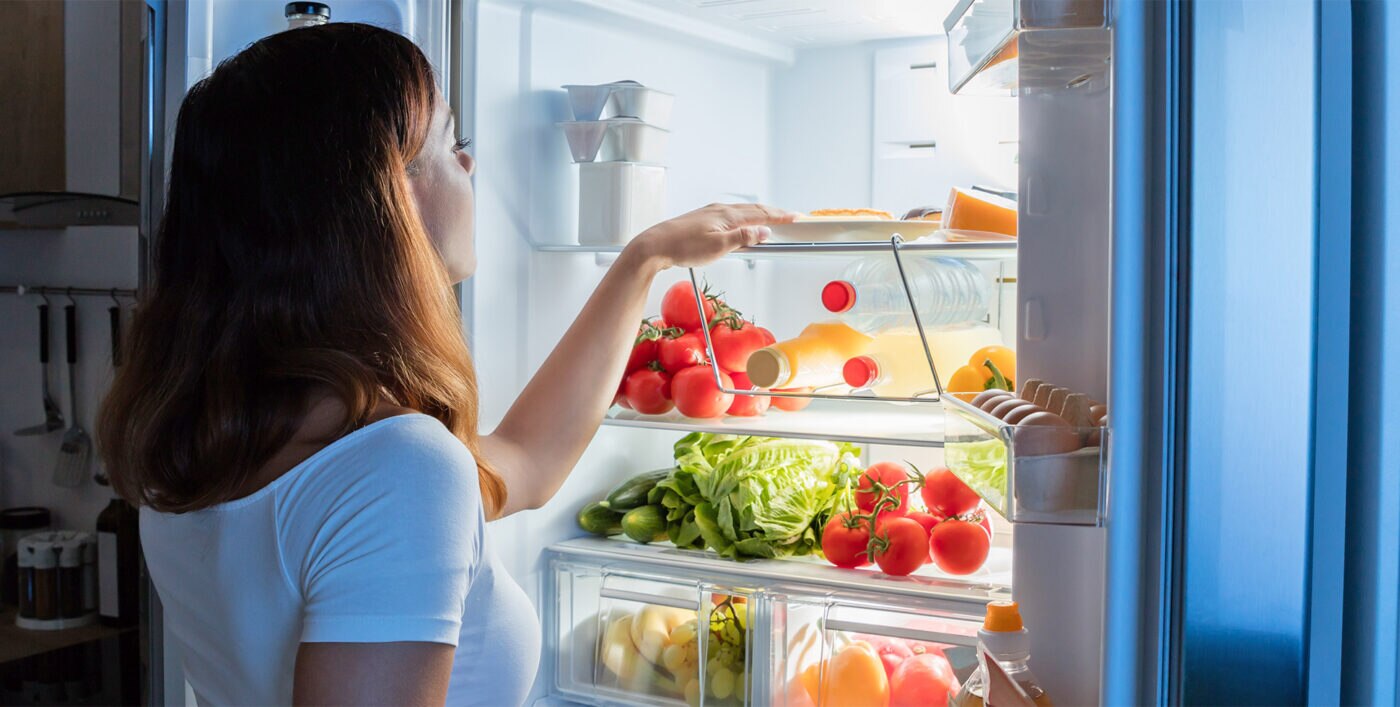Arçelik Tackles Climate Crisis with AI-Enabled Fridge

It’s 11pm. It’s hot. You’re a little hungry. What do you do? Chances are, you head to the refrigerator – source of refreshing coolness and dispenser of late-night snacks. And you’re not alone: around 35 million US households confess to owning two refrigerators, with six million households owning three or more. While these households are undoubtedly well equipped for late-night hunger pangs, they may not be doing themselves any favours in terms of their carbon footprint.
The fridge, in its capacity as an always-on device, is one of the most power-hungry appliances in the home, eating up anything from 7-13 percent of total domestic energy consumption. As one of the biggest home appliance manufacturers in the world, home to eleven brands including Grundig and Beko, efficiency has always been a priority for Arçelik – primarily because it’s good business sense. Consumers want efficient devices.
Consumers also want to buy from responsible brands. In a bid to minimize our environmental impact, we’ve long put sustainability at the heart of our R&D processes, resulting in products such as the BioFridge, made with high-performance, plant-based bio-plastics with a carbon footprint 80 percent lower than regular plastic. But increased awareness of energy consumption and its role in tackling the climate crisis has added new urgency to our research: we want to please our customers, of course, but we also want to help drive down carbon emissions. So we turned to Arm – a leader in innovative technology – to help us find a solution.
Identifying routes to energy efficiency
Since 1990, the energy consumption of refrigerators has dropped steadily year on year, but in the very near future, we expect progress to plateau. Energy reduction will not be as cheap and easy to achieve. But to avoid catastrophic climate change and limit global warming to 1.5˚C, we need to achieve optimal energy efficiency in every sector, in every household and in every device.
Refrigerators work by causing the refrigerant circulating inside them to evaporate, cooling the surrounding area. To start the process, the refrigerant is pressurized by compressor and cooled into its liquid state. Then the pressure on the refrigerant is reduced by an expansion device, which turns it from a liquid to a gas. It’s then recompressed, and the process starts again.
Within this cycle, there are several techniques that could be used to drive further efficiency. Most energy usage comes from the compressor turning on and off as it cycles the coolant, so one option is to optimize of our cycle systems. We could also look to improve thermal conductivity, upgrade the compressor or introduce other forms of thermal insulation, such as vacuum insulation panels.
None of these methods is economical or easy, however, nor are they likely to help achieve carbon-neutral production. In the case of the vacuum insulation panel, for example, a 10 percent energy reduction would add more than 30 percent to the retail price. Clearly, that’s not a sustainable solution. We decided that we needed to tackle the problem from a different angle – and we decided to get help from a company that shares our sustainability vision, our passion for progress and our focus on customer success: Arm.
The AI-enabled fridge: more intelligent refrigeration

Think of smart fridges and the chances are you think of something gimmicky that can write your shopping list for you – in other words, a solution in search of a problem. But in designing an AI-enabled fridge, we wanted to target other, infinitely more useful ways to add intelligence that deliver tangible benefits of the most compelling kind.
Arm shares our appetite for innovation – particularly in the interests of sustainability so, together we’re developing a self-tuning solution, based on reinforcement learning, that limits temperature fluctuation and optimizes energy use without adding to carbon emissions in manufacture.
Reinforcement learning differs from classical machine learning because instead of using a large dataset with predefined “answers”, the artificial intelligence is put in situ and achieves a goal by learning about its environment, essentially arriving at a solution by trial and error.
Usually, this learning process is completed at the R&D stage, and the ‘learnings’ incorporated into the final design. In this case, however, the learning environment itself is assimilated into the design, meaning the model can continue to learn – and optimize performance – even once the refrigerator is sitting in your kitchen.
Efficiency for the environment
So how does it work? Well, typically, the faster the compressor runs, the more heat is removed, and the higher the power cost. Arçelik’s AI-enabled fridge utilizes an existing Arm Cortex-M class of processor to balance compressor speed and power consumption, working within the hardware constraints and minimum work/stop times dictated by standards and product life.
The small-but-mighty Arm Cortex-M was a good fit for the processing requirements of the reinforcement learning and having access to Cortex-M’s software libraries, tools and optimization flows also helps to make implementation quick and easy – all without adding to the bill of materials.
So far, we’re seeing energy savings upwards of 10 percent in our AI-enabled fridge. This is a phenomenal improvement that could have a significant impact on household energy consumption and help inch the world towards its global ambition of bringing emissions to zero by 2050.
But this solution also has benefits beyond energy consumption. Each year, 1.6bn tonnes of food, worth approximately $1.2tn, goes to waste – about one-third of the food produced globally. In the average refrigerator, the temperature oscillates by +/-0.5° Celsius. By limiting this fluctuation to less than +/-0.2°Celsius, our AI-enabled fridge keeps food fresher for around 10 percent longer.
This obviously has a positive impact on household expenditure, but it also has implications for carbon emissions. According to the Food and Agriculture Organization (FAO) of the United Nations, if food waste were a country, it would be the third-highest emitter of greenhouse gases after the US and China. If the citizens of the world could stop wasting food, it would eliminate 8 percent of total global emissions.
Decarbonizing household devices, one step at a time
The AI-enabled fridge is still in development, but we expect to trial a prototype next year and roll the technology out to our product lines as soon as possible thereafter. However, this success is the tip of the iceberg. If we can use AI to optimize the performance of fridges, we see huge potential for its application in a host of other situations, scaling from an AI-enabled fridge at home to large-scale industrial cooling facilities, where it could help abate as much as 460 gigatonnes of greenhouse gas emissions – roughly equal to eight years of global emissions at 2018 levels – over the next four decades. The possibilities are almost limitless: wherever there’s a process, there’s an opportunity for optimization and a corresponding reduction in energy use.
If we can achieve these small efficiencies at scale, reducing the carbon footprint of each AI-enabled fridge and slashing overall energy consumption, we’ll be helping the world achieve its goal of bringing emissions to zero by mid-century. That’s certainly good news for our customers, but it’s even better news for the planet.
Arçelik was recently named as the most sustainable home appliances company in the world on the Corporate Knights’ 2021 Global 100 Index, an annual ranking of the world’s most sustainable corporations.
Any re-use permitted for informational and non-commercial or personal use only.












